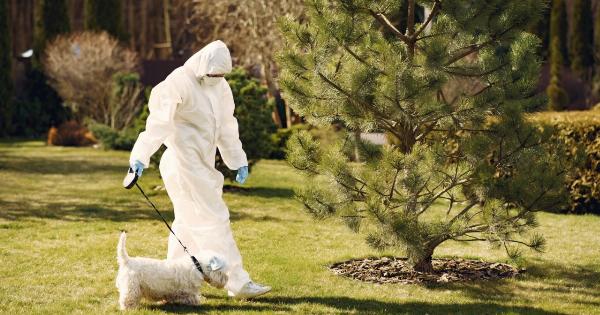Walking your dog should be a fun and enjoyable experience. However, it can quickly turn frustrating if you end up getting tangled in leash knots.
Not only is it inconvenient, but it can also be dangerous if your dog decides to run off while you’re tangled up. In this article, we’ll go over some tips on how to walk your dog without getting tangled in leash knots.
Choose the Right Leash
The first step in avoiding leash knots is to choose the right type of leash. A retractable leash may seem like a good option because it allows your dog more freedom to explore.
However, retractable leashes are notorious for getting tangled and are not recommended for inexperienced walkers.
A standard leash, preferably made of nylon or leather, is a better option. These types of leashes come in different lengths, so you can choose the one that works best for you and your dog.
A shorter leash will keep your dog closer to you, making it easier to prevent tangles.
Learn the Right Way to Hold the Leash
The way you hold the leash can also make a big difference in preventing leash knots. It’s important to hold the leash with a firm grip, but not too tightly.
Holding the leash too tight can cause your dog to feel anxious or uncomfortable, which can make them more likely to pull or get tangled.
Make sure the leash is not too long, as this can increase the chances of your dog getting tangled. Keep the leash at a length that allows your dog to walk comfortably next to you.
Choose a Route That Works for You and Your Dog
The route you choose can also affect your ability to walk your dog without getting tangled in leash knots. If you’re walking your dog in a crowded area, it can be difficult to navigate and avoid tangles.
Walking in a more open area, like a park or quiet street, can make it easier to keep your dog under control.
It’s also important to choose a route that works for your dog. Some dogs may be more prone to getting tangled in certain areas, like wooded trails or narrow paths.
If you notice that your dog gets tangled consistently in a certain area, it may be best to avoid that route altogether.
Train Your Dog to Walk on a Leash
Training your dog to walk on a leash can help prevent tangles. When you’re first starting training, it’s important to keep your movements slow and deliberate.
This will help your dog understand what you want them to do and how to behave on the leash.
Praise your dog for good behavior, and correct them gently if they start to pull or get distracted. Gradually increase the amount of time you spend walking your dog on a leash, giving them more freedom as they become more comfortable with the process.
Use Positive Reinforcement
Positive reinforcement is a great way to encourage good behavior on the leash. When your dog behaves well, reward them with treats, affectionate pets, or verbal praise. This will teach them that good behavior leads to positive outcomes.
Avoid punishment or negative reinforcement, as this can make your dog feel anxious or fearful. It can also cause them to pull or act out in other ways, making it harder to walk them without getting tangled.
Be Prepared for Unexpected Tangles
Even if you take all the necessary steps, there may be times when you still get tangled in leash knots. To be prepared for these situations, it’s a good idea to carry a small pair of scissors or a knife with you on your walks.
If you do get tangled in knots, you can use the scissors to quickly and safely cut yourself free. You can also use them to cut away any objects that may have gotten caught in the leash, like branches or debris.
Take Breaks to Check the Leash
Finally, it’s important to take regular breaks to inspect the leash and check for any signs of wear or damage. A damaged leash can increase the chances of tangles and can also be dangerous if it breaks while you’re walking your dog.
Inspect the leash for any signs of fraying, weakening, or other damage. If you notice any issues, replace the leash as soon as possible to keep you and your dog safe.


























